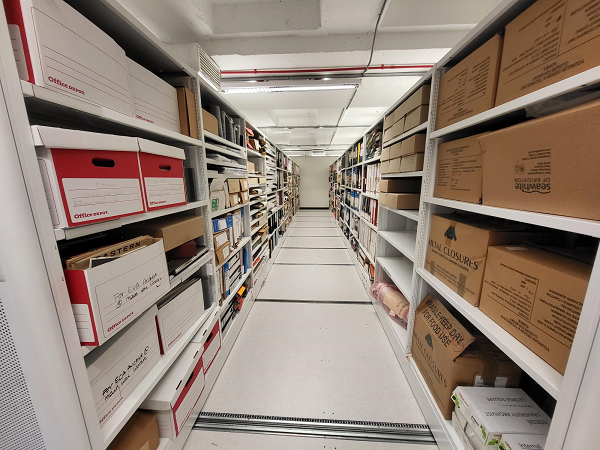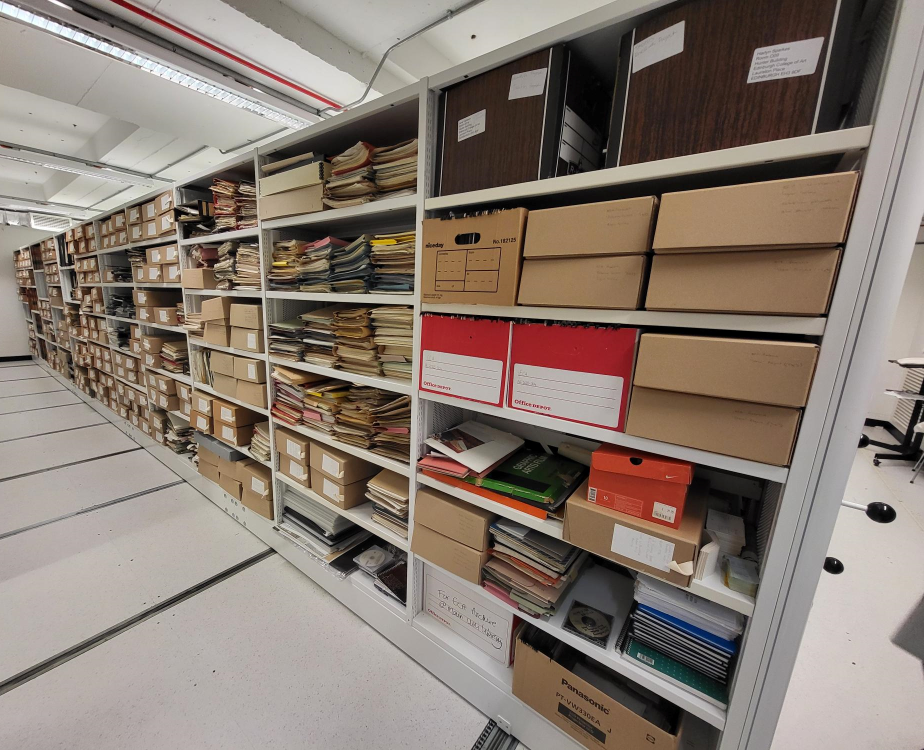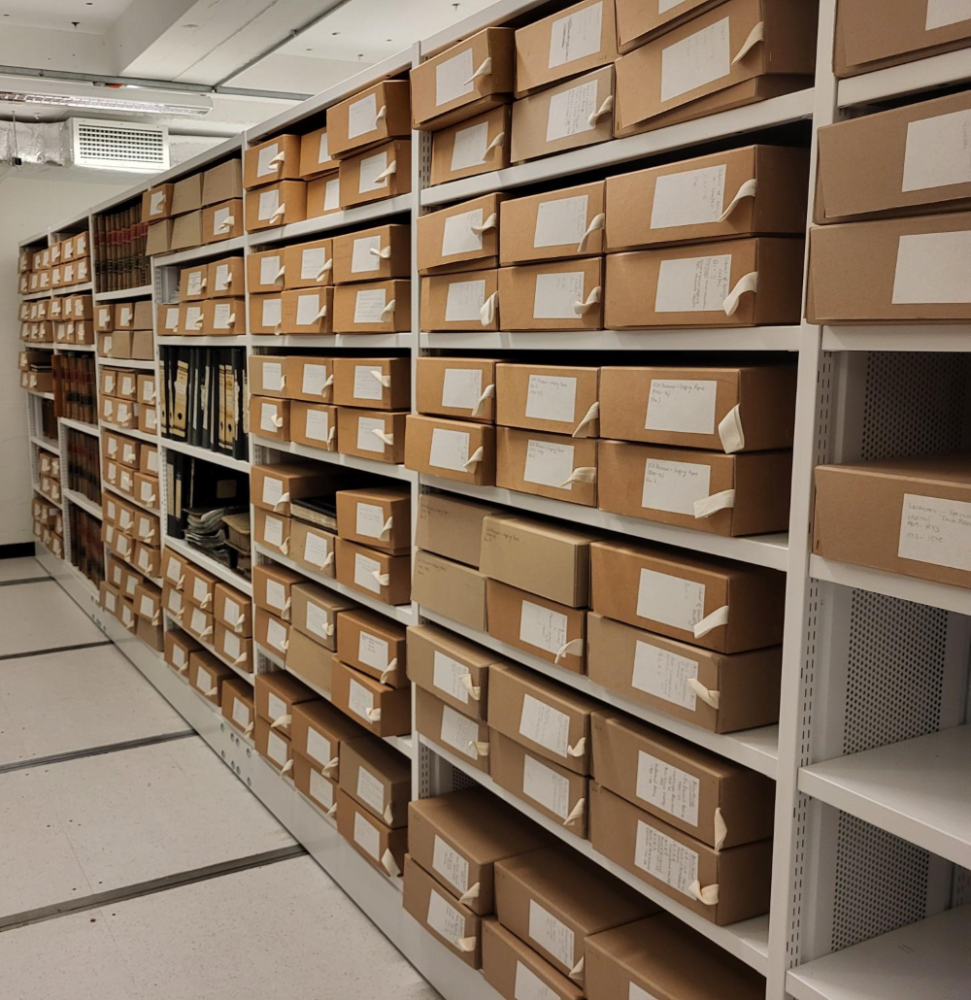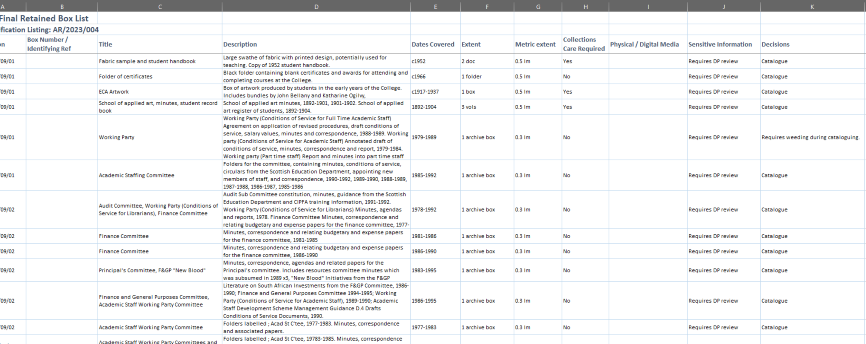One of our largest and most complex collections is that of the Edinburgh College of Art (hereafter named ECA). Transferred to Heritage Collections in 2012 following the merger of the College and University in 2011, the collection spans artwork, objects and paper archives. The paper archives alone total around 200 metres in volume, or well over 1,000 boxes and folders of material.
As a result, it has become one of the largest that requires rehousing and appraising. It is so large that Jasmine and I have had to undertake processing the collection in stages. To read more about appraisal and what it entails, check out last year’s blog by clicking this link.

Two of the five rows that hold the Edinburgh College of Art archives.
This work involved looking at previously created box lists and matching them to what was on the shelves, improving the level of detail in these descriptions, and making retention decisions. Why dispose or transfer material? There are three main reasons: items in which there were multiple duplicates, sensitive data that required disposal according to data protection laws, or material not complying with our collections development policy. We can also flag material that needs some extra TLC, either requiring some rehousing that archivists can carry out, or something more involved which requires our conservators’ expertise.
Once our decisions have been given the thumbs up by senior staff, Jasmine and I can ‘go to town’ on the collection.

Before…
In June 2024, Jasmine and I focused on the first row of material, totalling 87 metres of archival material. Following disposals, reboxing and condensing the records on the shelves, we were able to save an entire bay’s worth of space. This process was physically intensive, involving 18 shelves being raised and lowered, 29 confidential waste bags filled for destruction, and over 100 new archive boxes used to house the material.

…And after
Of course, all this work is of no good if the contents of these new boxes isn’t accurately recorded. As we weeded and rehoused material, Jasmine and I created a new spreadsheet which lists the retained material, their box location, and remaining actions to be taken – for example, the material may require bespoke housing or screening for GDPR (Data Protection) issues. An example of the latter would be anything containing sensitive information, such as exam and course feedback, or medical information. We need to ensure we are only retaining the information that it is absolutely necessary to keep.
The goal, once the remaining four rows have undergone the same treatment, will be a fully prepped collection ready for cataloguing. Accessibility is always the aim of appraisal, whether that be in space management, or intellectual access. You want to know what’s in the box as much as you need to be able to physically lift the box off the shelf!

Screenshot of the in-progress final box listing of the ECA collection
Stage two – that is, processing the next two rows – should begin in November, and the final stage in early Spring next year. It has been a job two years in the making, but the end results are gorgeous!
